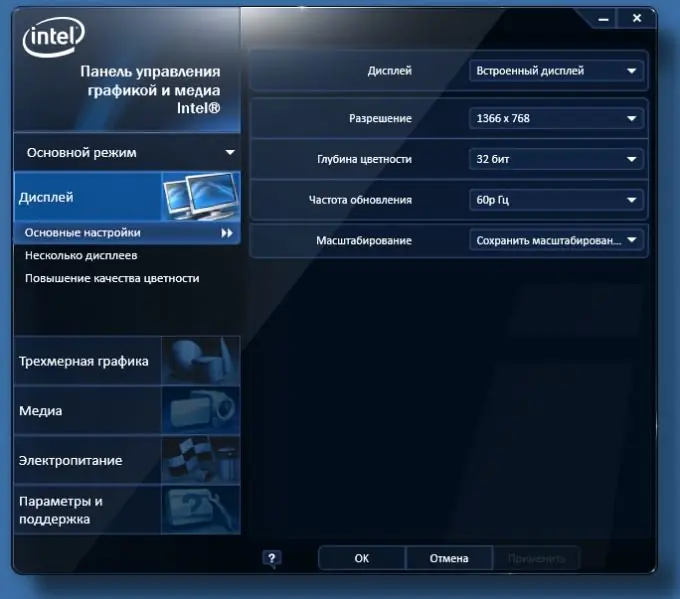You bought a laptop not so long ago, and everything seems to be working fine, but your eyes are beginning to experience discomfort. Then you try to adjust the brightness and frequency of the monitor, but the laptop does not respond in any way to the corresponding function keys, and only the monitor resolution and color scheme type are available in the Control Panel display settings. Perhaps the problem is that your laptop has a standard video adapter installed by default.

Necessary
- - access to the Internet;
- - video adapter driver.
Instructions
Step 1
To check if the native video adapter driver is installed on your computer, select My Computer -> Properties -> Device Manager and expand the Display adapters list. If "Standard PnP Video Adapter" appears in the list, then the drivers for your specific device are not installed.
Step 2
To install the required software, right-click on the standard device, select "Properties", in the window that opens, go to the "Driver" tab and click the "Update …" button. Please note: the computer must be connected to the Internet. In the window that opens, select "Search automatically for updated drivers."
Step 3
After the system finds and installs the required software, restart your computer for the changes to take effect. After installing the drivers, the device in the manager should be displayed by name, for example Intel (R) HD Graphics. You now have access to all the configuration options available for this monitor.
Step 4
Verify that the brightness control function keys are working. Usually F3 increases brightness and F2 decreases brightness. These can also be other function keys, indicated by the corresponding pictograms. Depending on the BIOS settings, they must be pressed independently or simultaneously with the fn key.
Step 5
The brightness of the laptop monitor can also be adjusted through the "Control Panel". To do this, go to "Start" -> "Control Panel" -> "Display", select "Adjust brightness" in the menu on the left and use the slider at the bottom of the window to set the required brightness level. Here you can also set individual parameters of the monitor depending on the power plan, as well as set your own power saving settings.
Step 6
In addition, you can now configure your monitor from the desktop. To do this, right-click on the desktop and select "Graphics Specifications …" (for Intel (R) HD adapter). The Intel (R) Graphics and Media Control Panel will open, where you can select one of three possible setting modes: Basic, where you can change the basic settings, Advanced, where all possible settings for your monitor are displayed, or Setting mode ", intended for sequential configuration of parameters. In any of these modes, you can calibrate the main characteristics of the monitor: resolution, color depth, refresh rate.






